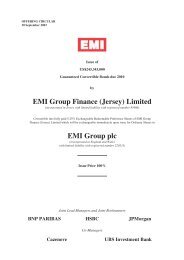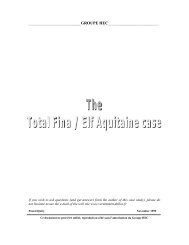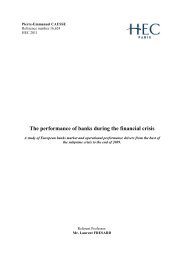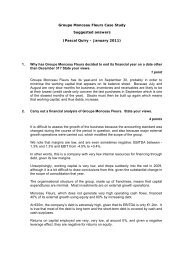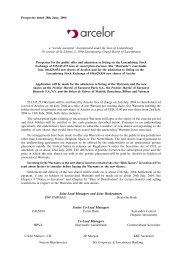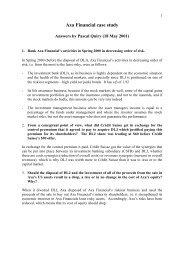Thesis_gd_final_vers.. - Vernimmen
Thesis_gd_final_vers.. - Vernimmen
Thesis_gd_final_vers.. - Vernimmen
You also want an ePaper? Increase the reach of your titles
YUMPU automatically turns print PDFs into web optimized ePapers that Google loves.
Table 12: Dynamic logistic regressions (2/2)<br />
Model 3:<br />
Variable Coefficient p-value<br />
net_int_inc -193.286 0.000<br />
net_inc -110.595 0.000<br />
securities -3.790 0.003<br />
ci_lo -3.900 0.021<br />
com_re_lo -1.284 0.168<br />
res_re_lo -3.170 0.010<br />
dvpt_re_lo -1.487 0.176<br />
non_perf_lo 41.022 0.000<br />
equity -113.614 0.000<br />
non_core_dep 0.878 0.125<br />
other_funding 4.528 0.004<br />
lag4_growth 0.428 0.236<br />
intercept 1.761 0.158<br />
- 46 -<br />
significant but has a positive coefficient<br />
which means that a higher exposure to MBS<br />
could result in an increased probability of<br />
failure. This is unexpected given that on<br />
average failing banks are less exposed to<br />
MBS. We find that a higher level of loans to<br />
total assets decreases the probability of<br />
bankruptcy and that this coefficient is<br />
significantly different from zero. However<br />
the coefficient reveals that the marginal<br />
strength of the loan ratio is smaller than the<br />
strength of the securities ratio. It means that<br />
an additional 1% of total assets invested in<br />
securities decreases more your probability of failure than an additional 1% invested in loans. It is<br />
interesting to note that none of the major investment assets categories (cash, securities and loans)<br />
increases the failure likelihood. We think this may be explained that there are no strong dynamic<br />
changes in asset allocation as failed banks get closer to bankruptcy. Thus the model cannot<br />
associate a specific asset allocation with failure because if we take a failed bank, the asset allocation<br />
per se which remains constant over time does not by itself explain why a bank fails at a certain<br />
point in time. The negative coefficient of the loan ratio can be explained by the fact that when<br />
bankruptcy gets closer failed banks tend to increase the share of cash tot the detriment of loans<br />
and securities (see Part 4). The direct cause of failure is the sharp drop of profitability, the rise of<br />
non-performing loans and the fall of equity to assets, which is well captured by our model.<br />
To interpret the influence of the different asset classes on failure probability we consider the<br />
relative difference between them, as they are mutually exclusive alternatives: if you invest a larger<br />
proportion of your assets in one class, this means that you invest less in all other classes holding<br />
total assets constant. Assuming that the difference between the estimated coefficient is statistically<br />
significant, for model 1, we can say that a higher exposure to loans is increasing bankruptcy<br />
probability because shifting 1% of assets from securities to loan automatically increases the<br />
probability because the coefficient on the loan ratio is less negative than the coefficient on the<br />
securities ratio.<br />
When looking at the breakdown of loans in Model 2 into several categories, we find that real estate<br />
decrease the least failure probability, followed by commercial and industrial loans and <strong>final</strong>ly by<br />
consumer credit. However, the coefficient on consumer credit is not significantly different from 0,<br />
even at a 10%-level. If we compare the different loan categories with securities, we see that it



